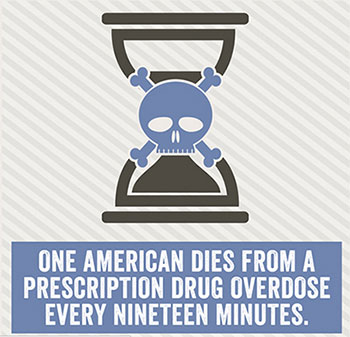
 The problem with prescription drug abuse in the United States Is not new. It affects every state in the America, including Utah.
The problem with prescription drug abuse in the United States Is not new. It affects every state in the America, including Utah.
What is new is that prescription drug abuse is in the news nearly every day. One reason is the precipitous increase in the abuse of opioid drugs, which are commonly prescribed for pain management.
At Alpine Recovery Lodge, we often get calls from people who want to know about prescription drug abuse and if it’s something they need to worry about. Here are some of the shocking statistics that tell the story of America’s prescription drug addiction problem.
Prescription drug abuse is far more common than most people realize. The 2016 National Study on Drug Use and Health revealed that approximately 28.6 million Americans had used illicit drugs in the month prior to the survey being taken. Not all of those drugs were prescription medications, but the problem is clearly a significant one.
Taking a longer view puts the problem with prescription drugs into perspective. A study from the National Institute on Drug Abuse found that 54 million Americans said they had used prescription drugs for non-medical reasons in their lifetimes.
According to the Centers for Disease Control, the number of deaths related to drug overdose was 63,632 in 2016. Here’s some information on what that number means:
These numbers help explain why the issue of opioid abuse has been prevalent in the news. Opioids have a powerful effect on the brain and are highly addictive.
Abuse of prescription drugs has risen among all age groups, and that includes teenagers. According to the Substance Abuse and Mental Health Services Administration, approximately 6.2% of teenagers were abusing prescription medications as of 2014.
Even more disturbing, many of the teenagers surveyed said that they took prescription medications because they believed they were safer to use than illicit drugs. They thought this mainly because they are prescribed by doctors and manufactured by pharmaceutical companies. There is a profound misunderstanding of the dangers inherent in taking prescription drugs for non-medical reasons.
There are thousands of prescription medications on the market, but many of them are not likely to be abused. The reason is that they don’t provide users with a high that activates the reward center of the brain.
Here are the drugs that are most likely to be abused, according to SAMHSA:
People who have these medications in their homes should be wary of potential abuse and addiction.
Breast cancer is still one of the most common types of cancer. In 2016 alone, it killed more than 41.000 people.
What might surprise you is that, according to a CNN report, opioid overdoses killed more people than breast cancer in 2016. The total was 42,249, and that number is expected to increase.
That explains why coverage of the opioid epidemic has increased, but so far it has done very little to address the problem.
Every year, the United Nations releases its World Drug Report, which analyzes trends in drug use around the world. One statistic that has held firm over many years is that the United States uses more drugs per capita than any other country in the world, including prescription drugs.
Some of the categories the report looks at it include:
The difference is most profound, not surprisingly, in the use and abuse of prescription drugs.
There’s evidence to suggest that teenagers may prefer prescription drugs to illicit drugs. One in seven teenagers said they had taken prescription drugs without a prescription in 2017. Some of the reasons they gave included:
While some teens may take drugs from their parents’ medicine cabinets, they also sometimes buy prescription drugs on the street.
There’s no question that the opioid epidemic is a serious problem, but there’s some reason to be hopeful in the long term. A 2018 CNBC report detailed the changes in opioid prescriptions and use.
From January to December of 2017, new opioid prescriptions decreased by about 10% each month. Opioid prescriptions in the United States reached an all-time high in 2011, when the total pills prescribed averaged out to 72 for each adult in the country. As of 2017, the average had declined to 52.
Of course, it is still a significant issue. Looking at the problem over time, the 2017 numbers are still much higher than they were just 25 years ago. In 1992, opioid prescription usage accounted for just 22 pills per adult.
The same report indicated an increase in medication-assisted therapies to overcome opioid addiction. These therapies use drugs like buprenorphine to help patients who are addicted to opioids. In 2015, 42,000 patients a month were using these therapies; by 2017, it had increased to about 80,000 patients per month.
The statistics regarding prescription drug abuse are alarming, and it’s important for anybody who uses prescription drugs to be aware of the potential for abuse. Opioid abuse has reached crisis levels and substance abuse experts and government officials must work together to reduce prescription drug misuse.
Alpine Recovery Lodge has years of experience treating prescription drug addiction. If you or a loved one is struggling with an addiction, we’re here to help.
